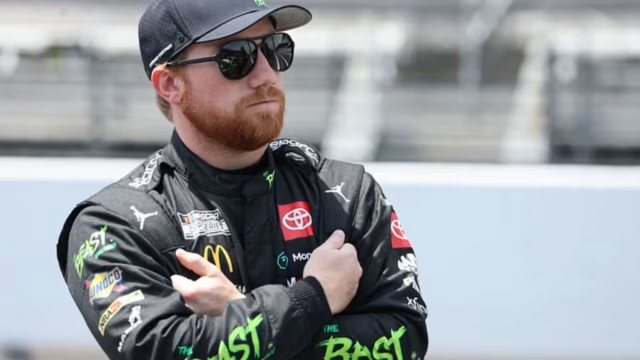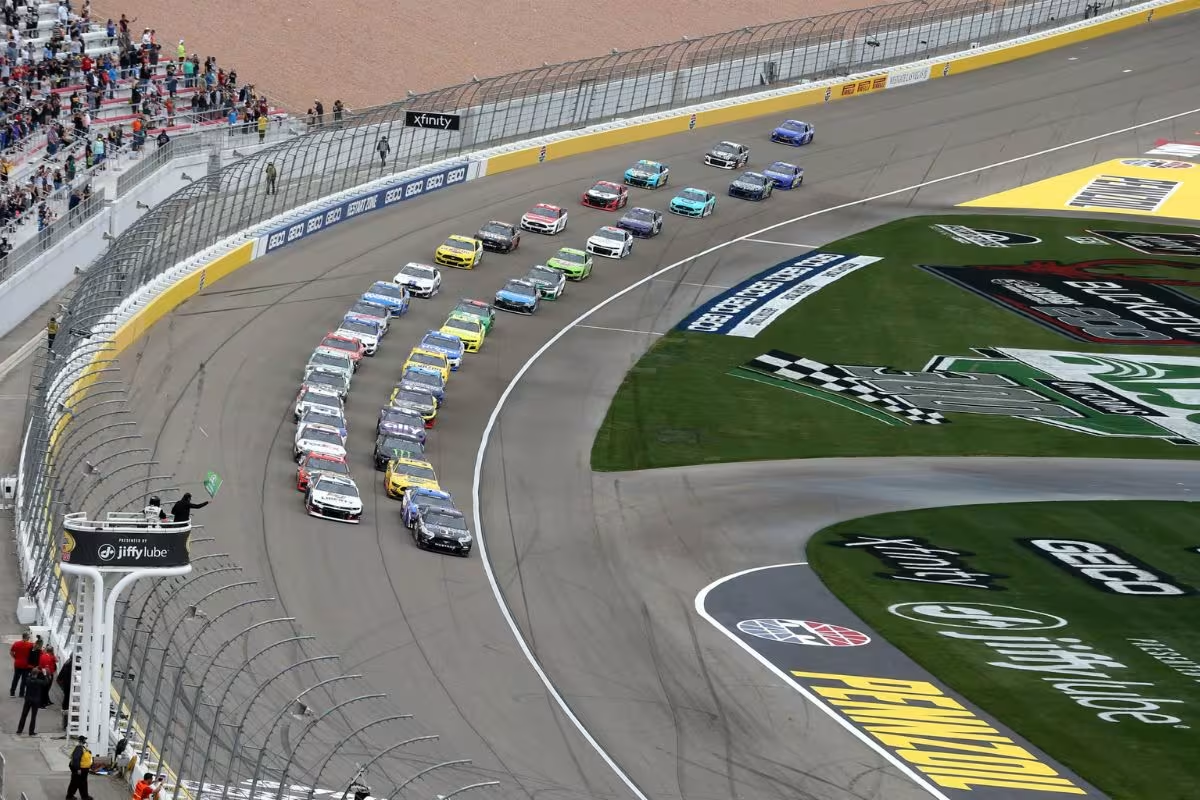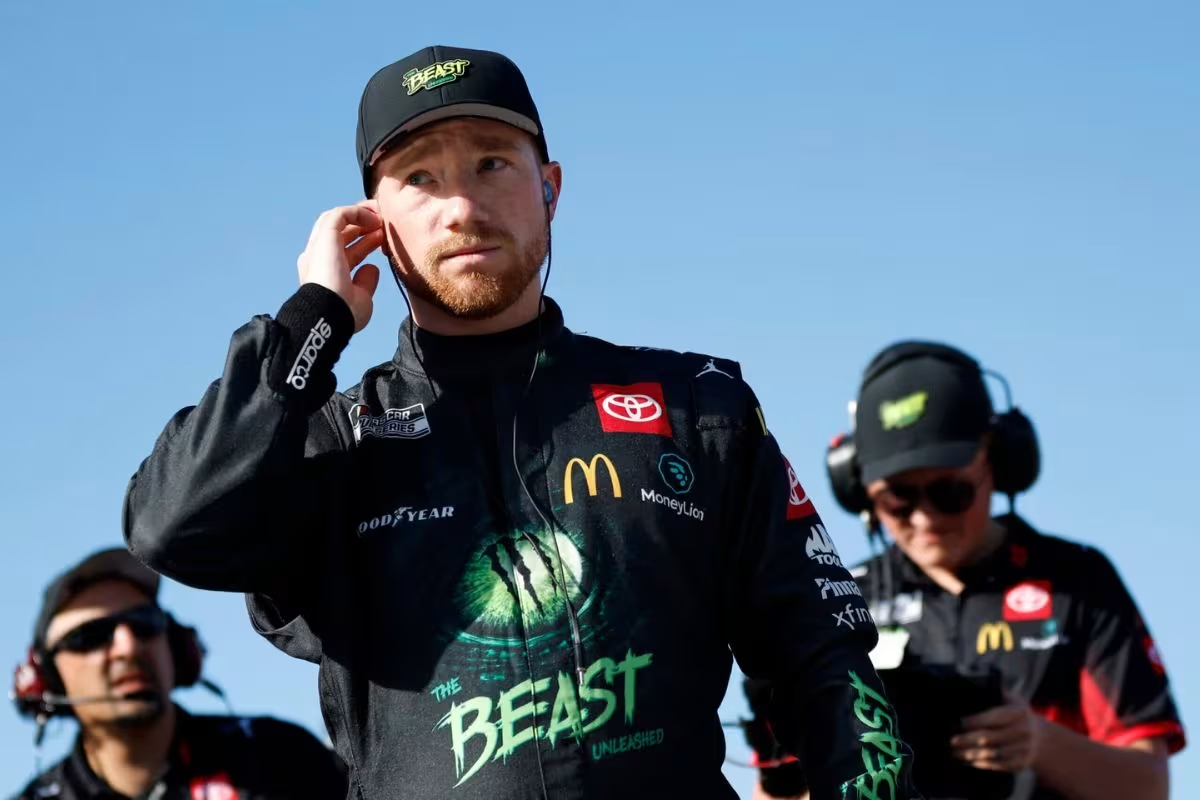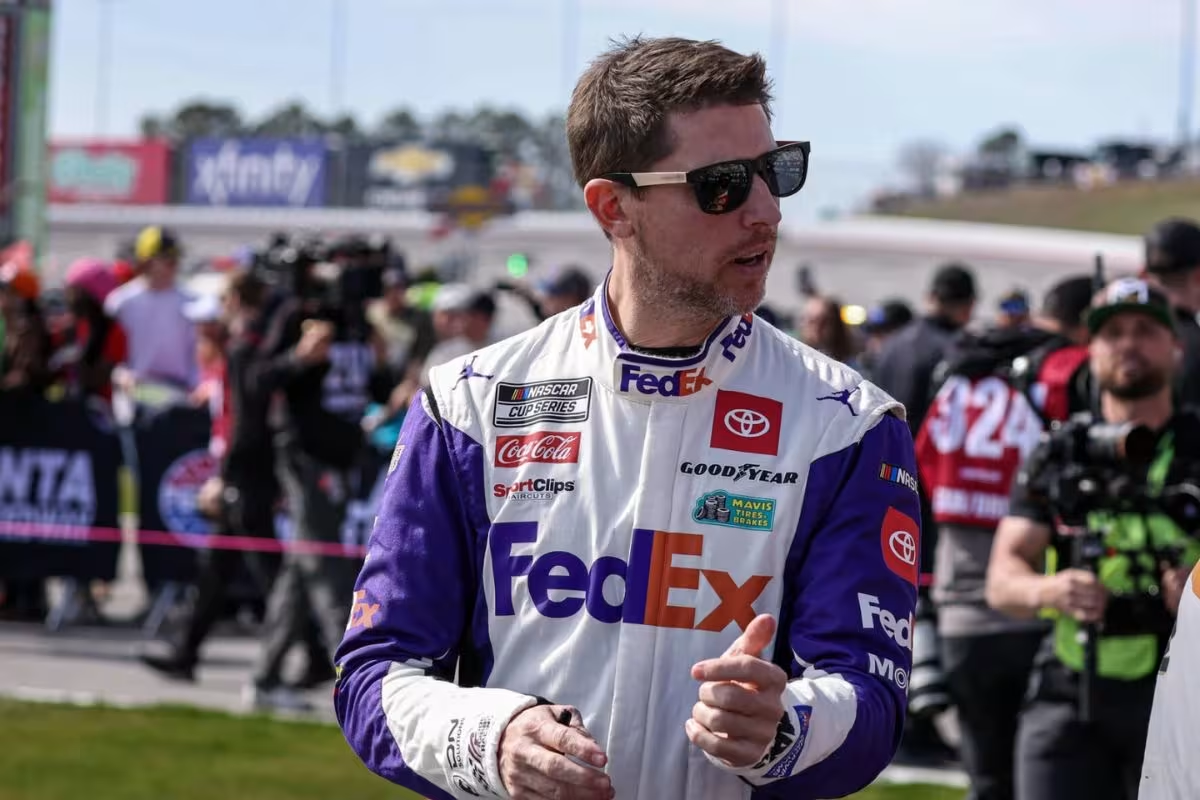Tyler Reddick stays positive after horrifying crash at Las Vegas Speedway that shook up the NASCAR playoffs. With his chances of making the Championship 4 hanging by a thread, fans are left wondering what will happen next. Despite the scary moments on the track, Tyler Reddick remains upbeat, refusing to point fingers. As he prepares for the crucial race in Homestead-Miami, will he turn this setback into a comeback?
Key Highlights
- Tyler Reddick displayed resilience by maintaining a positive outlook despite the severe crash at Las Vegas Speedway.
- He refused to assign blame to any individual or entity involved in the incident, showing maturity.
- Reddick’s strong performance in Stage 1 highlights his skill and competitiveness prior to his horrifying crash.
- His attitude may contribute to better future performances and reflects a strong character within the racing community.
Las Vegas Speedway Crash Shakes Up the Playoff Picture
What implications does a single crash have on the playoff landscape? The recent incident at Las Vegas Speedway serves as a striking reminder of the volatility inherent in motorsport. The crash involving Tyler Reddick and Chase Elliott not only eliminated both drivers from the race but also greatly altered the course of the championship battle.
With Elliott now -53 points below the cutline and Reddick trailing by -30 points, their path to the Championship 4 has become fraught with urgency.
This shocking shake-up at such a critical juncture highlights the chaotic fallout one single event can unleash on the already fragile NASCAR playoff picture.
Both drivers must recalibrate their strategies as they head into Homestead, Miami—a race that has now assumed immense importance in determining their futures. For Reddick and Elliott, the stakes have never been higher; they must navigate not only the challenge of the track but also the psychological weight of their current standings.
The consequences extend beyond these two drivers, affecting competitors who are now recalibrating their approach with the potential for unexpected shifts in dynamics. As teams assess their strategies, the crash has introduced an extra layer of complexity into the postseason narrative.
Why the Outrage Over This Crash?
The crash at Las Vegas Speedway has ignited a wave of outrage among fans and industry insiders likewise, primarily due to the dramatic nature of the incident involving Tyler Reddick. Unlike typical crashes that, while concerning, are often part and parcel of NASCAR, Reddick’s incident was particularly alarming because of the speed at which he lost control. The sight of his car flipping after hitting the grass struck a nerve, bringing NASCAR safety protocols and track conditions into sharp focus.
The combination of Reddick’s near-miss and the resulting car damage raised alarm bells across the NASCAR community. Fans are demanding accountability from Speedway Motorsports Inc., urging a reevaluation of NASCAR safety protocols that might prevent such harrowing incidents in the future.
The collective outrage is not merely a passionate response; it reflects deep-seated concerns about the integrity of NASCAR safety measures that should protect drivers in an inherently dangerous sport. Ultimately, this crash serves as a critical reminder of the need for ongoing vigilance in ensuring the safety of all participants on the track.
From Stage Victory to Last Row Finish for Tyler Reddick
Tyler Reddick’s rollercoaster performance at Las Vegas Speedway exemplified the unpredictable nature of NASCAR racing. After a stellar start, clinching victory in Stage 1, Reddick seemed poised for a promising outing. His early success, however, would soon be overshadowed by a dramatic turn of events that left him with a last-row finish.
In the 89th lap, Reddick attempted a bold three-wide tactic involving established competitors Chase Elliott and Martin Truex Jr. This audacious move caught both drivers off guard, setting the stage for a critical misjudgment. As Truex made a slight contact with Elliott, Reddick’s aggressive positioning on the outside exacerbated the situation, resulting in a chain reaction that led to his car being shoved into the wall.
The collision compromised Reddick’s race and resulted in a harrowing spin, ultimately flipping his car as it veered onto the grass.
The clear contrast between Reddick’s initial victory and subsequent misfortune serves as a poignant reminder of how quickly fortunes can change in NASCAR. While he displayed impressive skill and resolve to secure the stage win, the ensuing chaos clearly highlighted the sport’s volatility.
Despite the outcome, Reddick’s refusal to assign blame indicates a maturity that may serve him well as he navigates the challenges of racing. This incident, while disappointing, could ultimately fuel his drive to reclaim his competitive edge in future events.
Criticism and Concerns Over NASCAR Safety Measures
In the wake of Tyler Reddick’s harrowing crash at Las Vegas Speedway, considerable concerns have emerged regarding the NASCAR safety measures implemented at the track. The proximity of the grass to the racing surface has drawn considerable scrutiny, particularly in view of the aggressive driving behavior seen among competitors in the era of Next-Gen cars. This close placement of grass can exacerbate the consequences of crashes, as evidenced by the chaos that unfolded during the race.
The incident highlighted the need for a reassessment of track design and NASCAR safety protocols. Reddick’s experience, where a battle for position led to a critical incident, raises questions about the balance between competitive racing and driver safety. The aggressive nature of racing today amplifies the risks, and the presence of grass so near the track could create unpredictable outcomes when vehicles lose control.
Reddick himself remarked on the intensity of restarts, acknowledging that while drivers endeavor to minimize risks, the environment often pushes them into precarious situations.
“In the moment you try and not take any extra risks. You don’t need to. But looking at those two battling… Yes they got there late around the corner, this is just how restarts are”.
“Unfortunately, it just sounded like Martin didn’t know that I was going to get outside of the nine and we just all came together. Mistakes happen. I mean, it’s the human element. These things happen it’s just a part of it. We can go back and look at it all we want. But it’s a result we got. We’re gonna look at it in Homestead, get a car ready, and go down there very very motivated to run up front all day, score stage points, and hopefully win the race.” – Tyler Reddick
Reddick’s crash resulted in considerable damage, forcing him to switch to a backup car for the upcoming Miami race. As discussions continue regarding safety improvements, it is clear that stakeholders must consider how track design impacts driver safety, particularly in an era characterized by heightened competition and increased speed.
Denny Hamlin Voices Concerns Over Track Safety
Raising alarms about track safety, Denny Hamlin has taken to his podcast, Actions Detrimental, to express his concerns regarding the design inconsistencies at Las Vegas Motor Speedway. The recent crash involving Tyler Reddick has intensified discussions around the inherent dangers of NASCAR tracks, particularly highlighting how grass and infield design can greatly impact driver safety.
Hamlin pointedly remarked, “It’s unfortunate, and certainly, we don’t have any kind of standard of consistency concerning the grass and the infield and what we have on a mile-and-a-halves,” emphasizing a crucial gap in NASCAR safety measures.
“It’s unfortunate, and certainly, we don’t have any kind of standard of consistency when it comes to the grass and the infield and what we have on a mile-and-a-halves. If we’re so hellbent on these cars not flipping, because we think that’s a problem, what are they going to do about Las Vegas? If the other issues were a car problem, this is a track problem. So are we going to fix the track problem?” – denny hamlin
Hamlin’s remarks resonate deeply within the NASCAR community, as he questions the overarching approach to track design and NASCAR safety. He argues that if the sport is focused on preventing cars from flipping over, it is imperative to address the track conditions that contribute to such incidents.
“If the other issues were a car problem, this is a track problem,” he stated, urging the Speedway Motorsports Inc. (SMI) to prioritize track safety over merely addressing car-related issues.
The discontent among drivers regarding a lack of consultation in track design decisions is palpable, as they believe their insights could foster safer racing environments. Hamlin’s advocacy highlights the pressing need for a reevaluation of NASCAR safety standards, particularly at venues like Las Vegas, where the design has been called into question.
News in Brief: Tyler Reddick Stays Positive After Horrifying Crash
In the aftermath of the Las Vegas Speedway crash, Tyler Reddick’s resilience serves as a demonstration of the spirit of competition in motorsports. The incident has reignited discussions regarding NASCAR safety measures within the sport, particularly as prominent figures like Denny Hamlin advocate for improved track conditions.
Ultimately, this event not only impacts the playoff standings but also highlights the ongoing need for vigilance in ensuring driver safety, fostering a culture of responsibility and improvement within racing.
ALSO READ: Watch the Life-Threatening 360 Spin of Tyler Reddick That Shook the NASCAR Community



